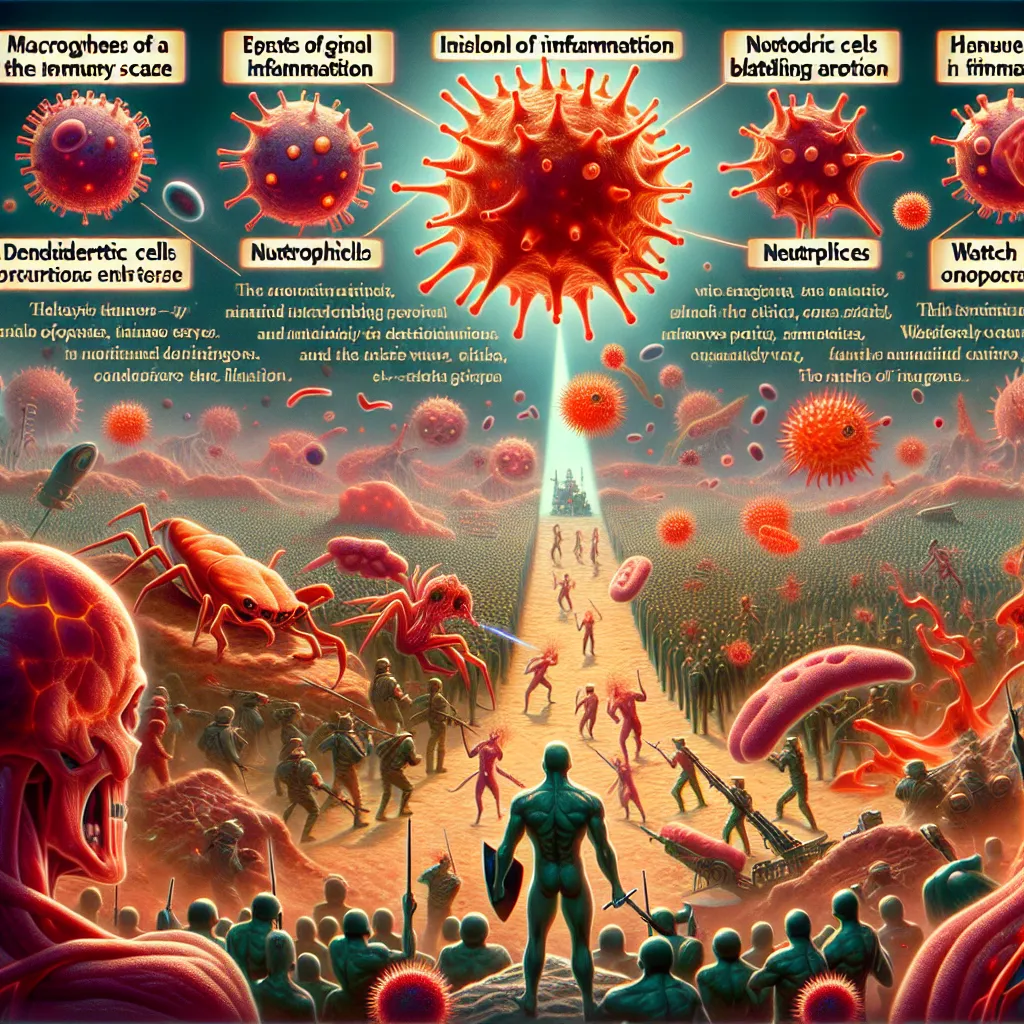Every second of your life, you’re under siege. Billions of bacteria, viruses, and fungi are out to invade your body. To fight them off, our bodies have developed an incredibly complex defense system. Imagine it as a little army with guards, soldiers, communication services, weapon factories, and intelligence units—all working together to keep you alive.
Let’s break this down a bit. Your immune system has 12 different jobs, like killing enemies and communicating, and it uses 21 different types of cells and 2 protein forces to do these jobs. Each cell can have up to 4 different tasks. It sounds like a lot, right? Let’s assign these tasks and get into the details.
Now, think about what happens when you get an infection. One minute, it’s a beautiful day, and the next, you step on a rusty nail, cutting through your first barrier—your skin. Nearby bacteria seize the opportunity, entering the wound and beginning to multiply rapidly. Initially, they go unnoticed, but soon, they start damaging your body by changing their environment. Your immune system has to act fast.
The first responders are your guard cells, known as macrophages. These big cells constantly patrol your body’s borders and can usually handle minor threats solo. They devour the invaders whole and use enzymes to kill them. They also trigger inflammation by signaling your blood vessels to release water into the affected area, making fighting easier. You might notice this as mild swelling.
If the macrophages can’t handle the threat alone, they call for backup, sending out messenger proteins. Neutrophils, another type of immune cell, rush to the scene and fight so aggressively that they can even harm healthy cells. They also create barriers to trap the bacteria. Because of their fierce nature, neutrophils self-destruct after about five days to prevent further damage.
When things get really serious, the dendritic cells—the brain of the immune system—step in. They collect samples of the invading bacteria, break them down, and present the pieces on their surface. Then, they decide whether to activate anti-virus or anti-bacteria forces and travel to the nearest lymph node, where billions of T cells are waiting.
In the lymph node, the dendritic cell looks for a helper T cell with the right setup to bind to the bacterial pieces. Once found, it triggers the helper T cell to multiply rapidly. Some of these T cells become memory cells, ready for future attacks, while others go to the battlefield. Another group heads deeper into the lymph node to activate B cells—a powerful weapons factory.
B cells and T cells with matching setups meet, causing the B cells to duplicate and start producing antibodies. These antibodies, specialized to attach to the invading bacteria, flood the bloodstream. Helper T cells ensure the B cells don’t die from exhaustion prematurely and stop producing antibodies once the infection is under control, conserving the body’s energy.
At the infection site, the battle is intense. While many immune cells and body cells die, the arrival of antibodies shifts the balance. The antibodies disable and kill many bacteria, making them easier targets for macrophages. Together, they wipe out the infection. The immune system wins, though many cells have died. These losses are quickly replenished, and most immune cells die off without the constant battle signals. However, some memory cells stay, ready to fight the same enemy more effectively if it comes back.
This is just a simplified look at how the immune system works. Even this overview highlights its complexity, but taking the time to understand it reveals an incredible, awe-inspiring system at play. Life is complex, but it’s also full of wonders and beauty when we take a closer look.






